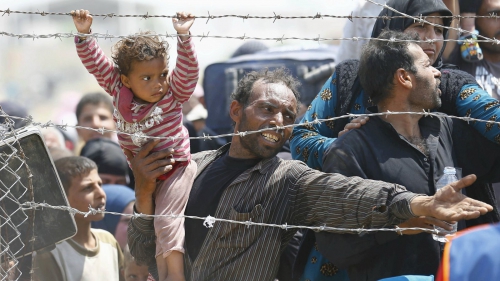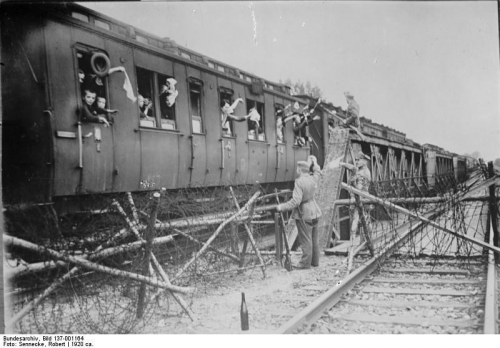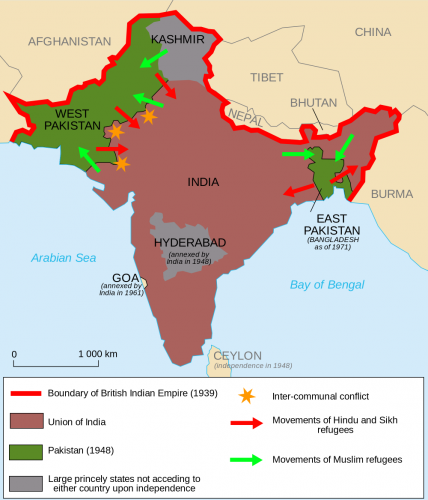dimanche, 17 avril 2016
Refugees Are a Vital Part of the Modern Nation-State

Refugees Are a Vital Part of the Modern Nation-State
The refugee crisis has been arguably the news story of the last year. Like every news-story, it has settled down into a tit-for-tat dialectic and has assured its own propagation. What I mean by that is that the big picture is barely even conceived, not to mind discussed, and so the problem, since it is not understood, will never converge to a solution amidst the heat of debate.
So, what is the big picture of the refugee crisis? And when I say big, it is with the intention of aiming for a picture with as much perspective as we need so as to understand the crisis fully. Without taking this primary step we are unable to engage with the issue in an honest and forthright manner. Is the big picture Syria? Sunni versus Shia? The Middle East? The War on Terror? The Clash of Civilisations? Religion? Human evil?
It is none of these although one could make a case based on the numbers of refugees on record that the crisis is largely a matter of either Arabic/South Asian Muslim-majority or Sub-Saharan Christian-majority nations. This does not stand scrutiny, though. Refugees are a symptom of the modern nation-state. Here is the evidence.
First, a broad outline of the evolution of the modern nation-state. The modern nation-state began to emerge most strongly after the French Revolution and stood triumphant after WWI. In the interim there was considerable resistance from the ‘old guard’ – the Hapsburgs and Romanovs of the world – who had developed ‘States’ but had not fostered a national spirit. The great Empires who fell to the ground during or after WWI were not ‘nations’, i.e. they were not territories inhabited by those who shared a mixture of well-defined ethnic, religious, linguistic, historical, or cultural characteristics.
After WWI, the principle of self-determination was vigorously promoted at the Versailles peace conference. The purpose of self-determination was to have the components of an international law system. To have a workable international system, there had to be units that were similar, even identical in form, in much the same way as a domestic legal system requires citizens who largely think the same.
Having people of the same nationality live together in the same territorial region appeared a simple answer at first to President Wilson. As the negotiations in Paris wore on, it became obvious that such a ‘clean’ solution was unrealistic. National self-determination was then supported by another concept, the idea of protecting minority rights.
During the war, there were large numbers of refugees fleeing the onrushing troops and artillery barrages. This was not unusual historically. During the Thirty Years’ War or the Napoleonic invasions, people often had to leave their homes carrying what belongings they could muster to seek shelter elsewhere. What was unusual about the ‘war to end all wars’ was the aftermath. Before WWI, refugees would typically have just gone back home. Now, new states were being forged and in order for these new states to satisfy ideals of self-determination, they had to expel or incorporate ‘aliens’ or ‘comrades,’ respectively. This was a particularly acute problem in central and Eastern Europe, where there was a vast patchwork of nationalities and religions.

The new nation-states in Europe eventually settled down into some sort of order in the inter-war years. However, there was one notable and well-known example during this time and later in the WWII years, that of National Socialist Germany, which demonstrated the anatomy of the nation-state idea. Here, there was a very conscious effort to completely purify Germany of all ‘alien’ influences and to absorb those peoples who had become ‘unmoored’ from German national destiny. Minority rights were totally swept aside and the bare nakedness of self-determination was apparent. Japan somewhat shadowed Germany also in the inter-war years.
After the war, Europe was like a nut caught in a vice-grip, the two handles of the vice-grip held by the US and Soviet Union, the latter fostering a quite conservative nationalism to supplement the proletarian revolution. Therefore, as a result of the stabilizing influence of the US and USSR, conflict and hence refugee crises were largely quelled in Europe. In the Cold War, the genie of national self-determination spread to non-European nations. Israel declared independence and began expelling the natives. In return there was the rise of Arab nationalism and Jews, tolerated and respected under the Caliphs and Sultans, left Egypt, Yemen, and other places in droves. Pakistan and India deliberately expelled and absorbed who they wanted in perhaps the most tragic episode of the modern nation-state when Britain packed up and left in 1947.

Then the ‘winds of change’ begun in Africa. In Rwanda, Nigeria and other places there was ethnic cleansing and there were also expulsions of colonial settlers, sometimes even ethnic minorities like those of Asian extraction kicked out by Idi Amin in the 1970s. And then, just to remind Europe of the post-WWI culture of self-determination, the former Yugoslavia rent itself apart in ethnic clashes during the 1990s. Kosovo, which most people in the world had never heard of, was the symbol of unfinished business left over from WWI. Oh yeah, let’s not forget Rwanda where two tribes who had lived peacefully together for hundreds of years prior to the Belgian occupation, now literally cut each other to pieces.
At this stage, I really don’t need to mention Iraq or Syria or Lebanon. You can see from what has been cited that refugee crises have affected most parts of the ‘Old World’ since WWI, the American nations having the benefit of being either dominated by Anglo-Saxon or Hispanic cultures and thus avoiding internecine conflicts (which is probably why Woodrow Wilson chose this template for international consumption). The big picture is obvious and no one can deny it. It is the construct of the nation-state which is joined at the hip with refugee crises and one can say that refugees are inherently part of a world where international law has nation-states as components.
As long as the nation-state ideal exists, there will always be the possibility of refugee crises and there will always be refugee camps stocked with those who are nation-less. Nearly 100 years after the nation-state concept became the bread and butter of international relations we really need to ask ourselves whether such a grossly inhumane concept has a future. It was an academic proposition but academics typically only have experience of the academic and not the real world. At time of writing, however, the academics and bureaucrats seem unwilling to broach this issue and, for the time being, a blogger on WordPress with a few followers is likely to be about as far as this question is pursued. And, it’s only a matter of time before refugees travel away from Europe and not towards her as new justifications for nation-states are formulated by demagogues.
00:02 Publié dans Actualité, Définitions | Lien permanent | Commentaires (0) | Tags : actualité, définition, réfugiés, état-nation |  |
|  del.icio.us |
del.icio.us |  |
|  Digg |
Digg | ![]() Facebook
Facebook



Les commentaires sont fermés.